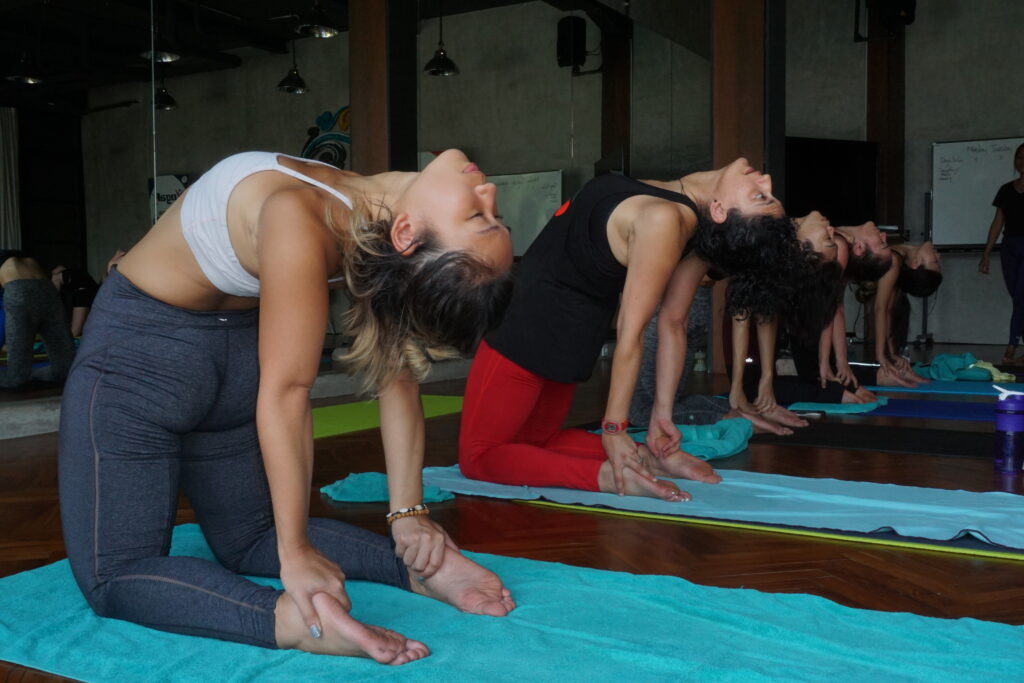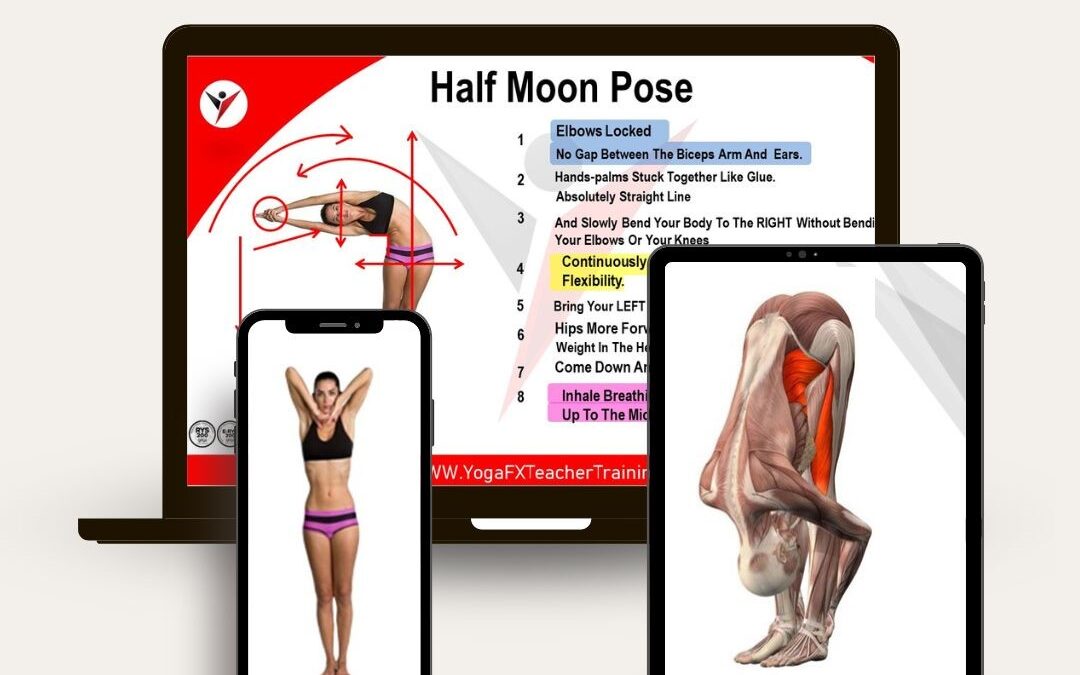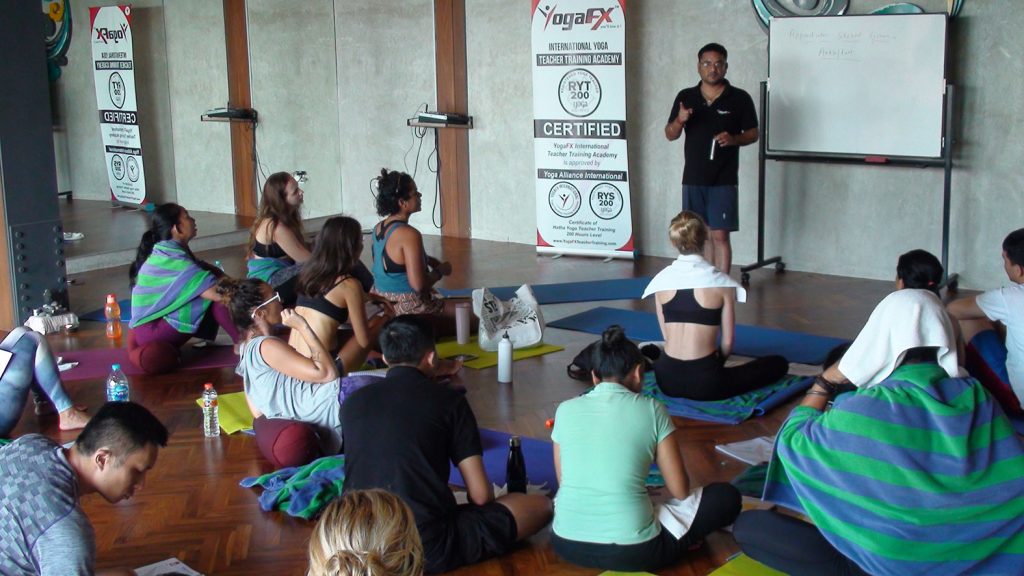Expecting a child is a beautiful and transformative journey, and many women turn to yoga as a means of maintaining their physical and mental well-being during pregnancy. But is it safe to practice yoga when pregnant? In this article, we will explore the benefits and considerations of yoga during pregnancy, shedding light on its potential advantages and important factors to consider. Whether you’re an experienced yogi or new to the practice, understanding the safety aspects of prenatal yoga is crucial for the health and well-being of both you and your baby. So, let’s delve into the topic, discussing the precautions, benefits, and recommendations to help you make an informed decision about practicing yoga during pregnancy.

Benefits of Yoga During Pregnancy
Prenatal yoga offers a range of benefits that can support your physical and emotional well-being throughout pregnancy:
1. Physical Benefits:
- Improved Flexibility and Strength: Prenatal yoga helps to maintain and enhance flexibility and strength, supporting the changing needs of your body during pregnancy.
- Relief from Pregnancy Discomforts: Gentle stretches and movements in yoga can alleviate common pregnancy discomforts such as back pain, tight muscles, and joint stiffness.
- Preparation for Labor and Childbirth: Yoga poses and breathing exercises can help strengthen the pelvic floor muscles, improve stamina, and enhance body awareness, which are beneficial for labor and childbirth.
2. Mental and Emotional Benefits:
- Stress Reduction and Relaxation: Yoga promotes relaxation and stress reduction through mindful breathing techniques and gentle movements, providing a calming effect on the nervous system.
- Increased Body Awareness and Connection: Prenatal yoga cultivates a deeper connection with your body and growing baby, fostering a sense of empowerment and mindfulness.
- Enhanced Emotional Well-being: Regular yoga practice during pregnancy can contribute to improved mood, reduced anxiety, and increased overall emotional well-being.
“Be Mindful About The Stress Of Stuff”
Considerations for Safe Prenatal Yoga Practice
While yoga can be a safe and beneficial practice during pregnancy, it is important to consider the following factors for a safe and enjoyable experience:
1. Consultation with Healthcare Provider
- Seek medical guidance: Consult with your healthcare provider before starting or continuing a yoga practice during pregnancy, especially if you have any specific health concerns or complications.
- Address individual needs: Discuss your fitness level, any restrictions, and modifications required to ensure a safe practice.
2. Modifications and Appropriate Yoga Poses:
- Avoid high-risk poses: Refrain from poses that involve lying flat on your back, deep twisting, strong core engagement, or excessive stretching.
- Focus on gentle stretches and modified poses: Emphasize poses that support your changing body, focusing on gentle stretches, standing poses, hip openers, and pelvic floor exercises.
3. Monitoring Physical Sensations and Limitations:
Listen to your body: Pay attention to your body’s cues and sensations during practice. If a pose feels uncomfortable or causes pain, modify or skip it. Avoid overexertion and honor your limitations.

Precautions and Safety Tips
To ensure a safe and comfortable prenatal yoga practice, consider the following precautions:
1. Awareness of Physical Changes and Limitations:
- Adaptations for the changing body during pregnancy: Modify poses as needed to accommodate your growing belly and maintain balance and stability.
- Modifications for balance and stability: Use props, such as blocks or bolsters, to support balance and stability during standing poses or asanas that require extra support.
2. Proper Warm-up and Cool-down:
- Gentle warm-up exercises: Begin your practice with gentle warm-up exercises, such as neck and shoulder rolls, gentle stretches, and mindful breathing, to prepare your body for movement.
- Incorporation of relaxation techniques in cool-down: Conclude your practice with relaxation techniques, such as Savasana (Corpse Pose), to promote a sense of calm and grounding.
3. Hydration and Staying Cool:
- Maintain adequate hydration: Drink plenty of water before, during, and after your practice to stay hydrated.
- Avoid overheating: Practice in a well-ventilated room, wear comfortable clothing, and take breaks or modify poses if you feel overheated.
Types of Yoga Recommended for Pregnancy
Consider the following yoga options that are suitable for pregnancy:
1. Prenatal Yoga Classes:
- Tailored specifically for pregnant women: Prenatal yoga classes are designed to address the unique needs of pregnant individuals.
- Inclusion of poses and techniques suitable for pregnancy: These classes typically focus on gentle stretches, modified poses, breathwork, and relaxation techniques tailored for pregnancy.
2. Gentle Yoga and Modified Practices:
- Adapt general yoga classes: Attend regular yoga classes and modify poses to accommodate your pregnancy. Communicate with your instructor and inform them about your pregnancy for appropriate modifications.
- Focus on relaxation and gentle movements: Emphasize relaxation, breath awareness, and gentle movements that promote strength, flexibility, and stress reduction.
When to Avoid Yoga During Pregnancy
While yoga is generally safe during pregnancy, there are instances when it may be best to avoid or modify your practice:
1. High-Risk Pregnancies and Medical Conditions:
- Identifying conditions that may contraindicate yoga practice: If you have a high-risk pregnancy, preterm labor, or certain medical conditions, consult your healthcare provider to determine if yoga is suitable for you.
- Consulting with healthcare providers for guidance: Medical professionals can provide personalized guidance based on your specific situation and medical history.
2. Personal Discomfort and Limitations:
- Recognizing when yoga poses or movements are not suitable: If a pose feels uncomfortable, causes pain, or does not align with your body’s abilities and limitations, skip or modify it.
- Prioritizing comfort and safety during the practice: Always prioritize your comfort and listen to your body’s signals.

Conclusion
Prenatal yoga offers numerous benefits for both the physical and emotional well-being of pregnant individuals. By practicing yoga during pregnancy, you can improve flexibility, strength, and body awareness while reducing stress and promoting emotional well-being. It is essential, however, to prioritize safety and consider the unique needs of your body during pregnancy. Before beginning or continuing a yoga practice, consult with your healthcare provider to ensure it is safe for you and your baby.
If you are interested in deepening your knowledge and sharing the benefits of prenatal yoga with others, consider enrolling in the Bikram Hot YogaFX teacher training program led by Mr. Ian YogaFX. As a Yoga Alliance certified and ACE qualified instructor, Mr. Ian YogaFX provides comprehensive training that can empower you to guide pregnant individuals safely through their yoga journey. Embrace the beauty and benefits of prenatal yoga while prioritizing your safety and the well-being of both you and your baby.






